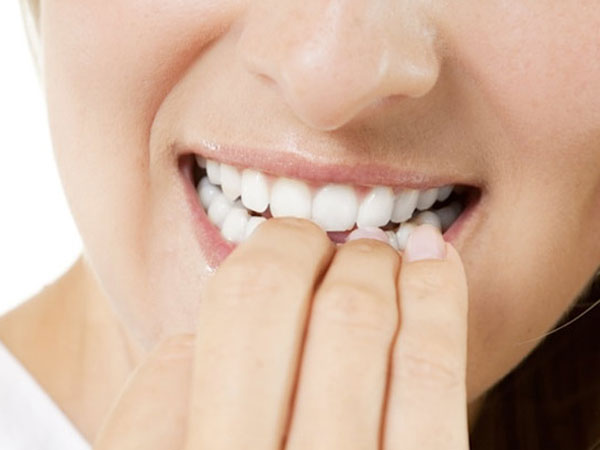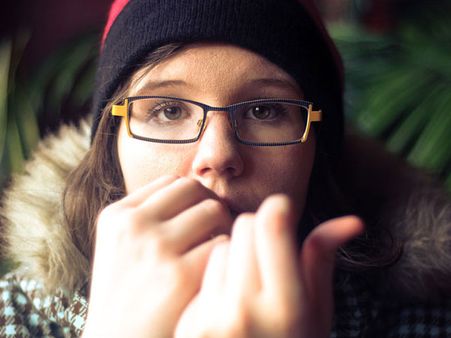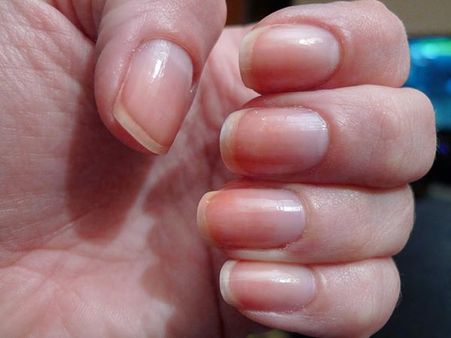Just In
- 30 min ago

- 6 hrs ago

- 8 hrs ago

- 11 hrs ago

Don't Miss
- Movies
 Kiran Rao Had 'A Lot Of Miscarriages', Aamir Khan's Ex Wife Shares Personal & Physical Battles
Kiran Rao Had 'A Lot Of Miscarriages', Aamir Khan's Ex Wife Shares Personal & Physical Battles - Sports
 IPL 2024: Rishabh Pant - The Babysitter! Fans adore Delhi Capitals captain after viral video with Kids
IPL 2024: Rishabh Pant - The Babysitter! Fans adore Delhi Capitals captain after viral video with Kids - Finance
 8 Tata Group Stocks To Buy That Will Pay Dividends Soon, Q4 In Focus; Are You Invested?
8 Tata Group Stocks To Buy That Will Pay Dividends Soon, Q4 In Focus; Are You Invested? - News
 Iran Embassy In Paris Cordoned Off Following Reports Of Suspect With Explosives
Iran Embassy In Paris Cordoned Off Following Reports Of Suspect With Explosives - Automobiles
 Suzuki Swift Hatchback Scores 4 Star Safety Rating At JNCAP – ADAS, New Engine & More
Suzuki Swift Hatchback Scores 4 Star Safety Rating At JNCAP – ADAS, New Engine & More - Education
 NLSIU Announces the Rajiv K. Luthra Foundation Grant
NLSIU Announces the Rajiv K. Luthra Foundation Grant - Technology
 Dell Introduces AI-Powered Laptops and Mobile Workstations for Enterprises in India
Dell Introduces AI-Powered Laptops and Mobile Workstations for Enterprises in India - Travel
 Journey From Delhi To Ooty: Top Transport Options And Attractions
Journey From Delhi To Ooty: Top Transport Options And Attractions
Body-focused Repetitive Behaviour: What You Should Know
A group of related disorders such as skin picking, nail biting, hair pulling, etc., can be together referred to as body-focused repetitive behaviour. Read on to know more about this behaviour, how it leads to self harming, its diagnosis and treatment.
What Is Body-focused Repetitive Behaviour?
A set of interrelated disorders is referred to as body-focused repetitive behaviour. These are also termed as self-grooming behaviours. There still exists some debate about whether this disorder should be categorized as impulsive or compulsive. Theories also relate body-focused repetitive behaviour to impulse control disorders, anxiety disorders and obsessive compulsive disorder.

It is difficult to control individuals with this behaviour and can lead to self-physical injury such as skin infections and scarring. If the condition remains undiagnosed, it can lead to severe emotional distress for the afflicted person.

What Causes Body-focused Repetitive Behaviour?
Few people might have an inherited tendency of hair pulling and skin picking. Research has also shown the presence of hair pulling behaviour in twins. Other factors that could lead to body-focused repetitive behaviour are:
•
Stress
•
Temperament
•
Environment
•
Onset
of
age
In general, such behaviours have been widely associated with genetic and neurobiological origins. This behaviour requires individualized treatment approach that can only be determined after taking into consideration genetics, behavioural and biological indicators.
Main Types Of Body-focused Repetitive Behaviour

• Hair pulling
This is also referred to as trichotillomania. People who have this disorder tend to pull out their own hair from the eyelashes, scalp, eyebrows and other parts of the body. This causes noticeable bald patches. Many such people also tend to swallow the pulled out hair. This can lead to severe levels of embarrassment in public.

• Skin picking
This is also referred to as excoriation. People with this disorder repeatedly rub, scratch, pick, dig and touch their skin. This causes the discolouration of the skin along with severe tissue damage and scarring. There could be skin disfigurement as well.

• Nail biting
This is also referred to as onychophagia. People with this disorder bite their nails way beyond the nail bed. They also chew on the cuticles. It can lead to becoming as severe as bleeding nails. There could be infection and soreness.

• Cheek and lip biting
Many people with this disorder tend to chew their cheek and lips. Cheek biting can cause painful sores and tears along with redness. Chronic cheek biting is called morsicatio buccarum. The person with this disorder repeatedly keeps biting the inside of his or her cheek.

• Nail picking
Severe and constant nail picking can lead to nail deformities. Ridges and grooves develop under the nails. Blood may accumulate under the nail - this is usually seen as a purple-black spot.

• Scab eating
A form of skin picking, scab eating has been categorized under obsessive compulsive and related disorders. People with this behaviour finish their skin picking behaviour by eating the piece of skin that they have removed from their body.

How Is Body-focused Repetitive Behaviour Diagnosed?
Symptoms are the best way for a doctor to identify and determine the existence of body-focused repetitive behaviour. People usually feel tense or anxious just before starting to do activities linked with this disorder.
Doing an activity such as skin picking or hair pulling might relieve the person of the anxiety that he or she had been feeling. People usually feel distressed due to their loss of controlling ability. They also repeatedly try to stop doing the activity.

The symptoms that a doctor ideally looks for are:
The symptoms that a doctor ideally looks for are:
•
Picking
at
the
skin
•
Manipulating
a
body
part
that
leads
to
self-damage
or
self-harm
•
Trying
repeatedly
to
stop
or
decrease
the
occurrence
of
the
activities
associated
with
the
disorder
•
Reduced
functionality
due
to
the
activities
associated
with
the
disorder
•
Patient
feeling
extremely
distressed

What Are The Treatment Options?
The
ideal
treatment
options
are:
•
Cognitive
therapy
•
Use
of
drugs
The drugs that are usually prescribed are selective serotonin reuptake inhibitor antidepressants and N-acetylcysteine. Cognitive-behavioural therapy can be used to lessen the symptoms associated with body-focused repetitive behaviour.
One such therapy is habit reversal therapy. Under this therapy, the patient is taught ways so that they can do the following:
•
Identification
of
events
or
situations
that
trigger
the
behavioural
disorder
activity.
•
Increase
in
awareness
of
what
one
is
doing
when
involving
in
activity
linked
to
the
disorder.
•
Trying
to
stop
oneself
from
doing
a
harmful
act.
This
primarily
involves
substituting
an
activity
that
is
harmful.
Strategies
used
could
be
something
like
clenching
the
fist
or
sitting
on
one's
hands
while
the
urge
to
pull
out
hair
or
skin
picking
occurs.
•
Encouraging
patients
to
indulge
in
activities
such
as
knitting,
etc.
can
also
help
reduce
the
occurrence
of
activities
that
can
cause
self-harm.
-
 fashion6 Stunning Dresses Perfect For Mid-Sized Women, And They Are Vidya Balan Approved!
fashion6 Stunning Dresses Perfect For Mid-Sized Women, And They Are Vidya Balan Approved! -
 fashionPlus Size Appreciation Day 2023: 10 Styling Tips For Curvy Women
fashionPlus Size Appreciation Day 2023: 10 Styling Tips For Curvy Women -
 pregnancy parentingCultivating Respect And Safety: Nurturing Children's Understanding Of Body Boundaries And Consent
pregnancy parentingCultivating Respect And Safety: Nurturing Children's Understanding Of Body Boundaries And Consent -
 healthExercise Your Way to a Sharper Mind and Body After 50s– Here's How!
healthExercise Your Way to a Sharper Mind and Body After 50s– Here's How! -
 healthDiscover The Ancient Wisdom: 5 Traditional Indian Exercises For Holistic Well-Being
healthDiscover The Ancient Wisdom: 5 Traditional Indian Exercises For Holistic Well-Being -
 fashionDress As Per Your Body Type - 5 Fashion Tips To Flatter Your Figure
fashionDress As Per Your Body Type - 5 Fashion Tips To Flatter Your Figure -
 fashionFlatter Your Figure: The Top 5 Dress Combinations for Pear Shaped Bodies
fashionFlatter Your Figure: The Top 5 Dress Combinations for Pear Shaped Bodies -
 womenDiscover Your Body Type: Enhance Your Style and Confidence
womenDiscover Your Body Type: Enhance Your Style and Confidence -
 healthSugar Side Effects On Body: Organs Affected By Eating Too Much Sugar
healthSugar Side Effects On Body: Organs Affected By Eating Too Much Sugar -
 womenFree The Nipples: Will Going Bra-Less Ever Be Considered Normal?
womenFree The Nipples: Will Going Bra-Less Ever Be Considered Normal? -
 wellness14 Things That Happen When You Turn 40 And Why
wellness14 Things That Happen When You Turn 40 And Why -
 wellnessKnow From A Nutritionist About Hormones: Your Body’s Social Network
wellnessKnow From A Nutritionist About Hormones: Your Body’s Social Network


 Click it and Unblock the Notifications
Click it and Unblock the Notifications



